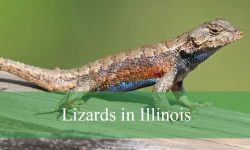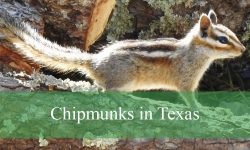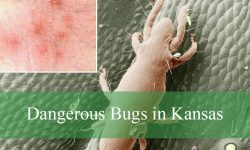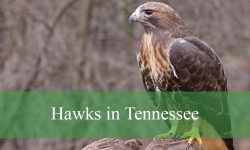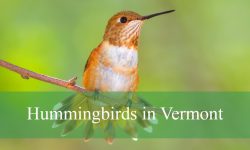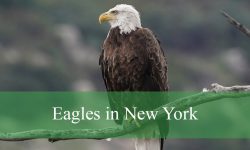In Minnesota’s forests, flying squirrels glide silently through the night, capturing the curiosity of anyone fortunate enough to spot them. These small mammals are remarkable for their nocturnal lifestyle and extraordinary aerial abilities.
Although their name suggests flight, flying squirrels do not actually fly. They rely on a furry membrane called the patagium to glide smoothly from tree to tree, using precise control to navigate the canopy.
The state’s rich mix of hardwood and coniferous forests provides the perfect habitat for these elusive creatures. To truly appreciate flying squirrels in Minnesota, it is essential to examine their appearance, behavior, diet, habitat, and the unique traits that set them apart from other squirrels.
Identification and Physical Characteristics
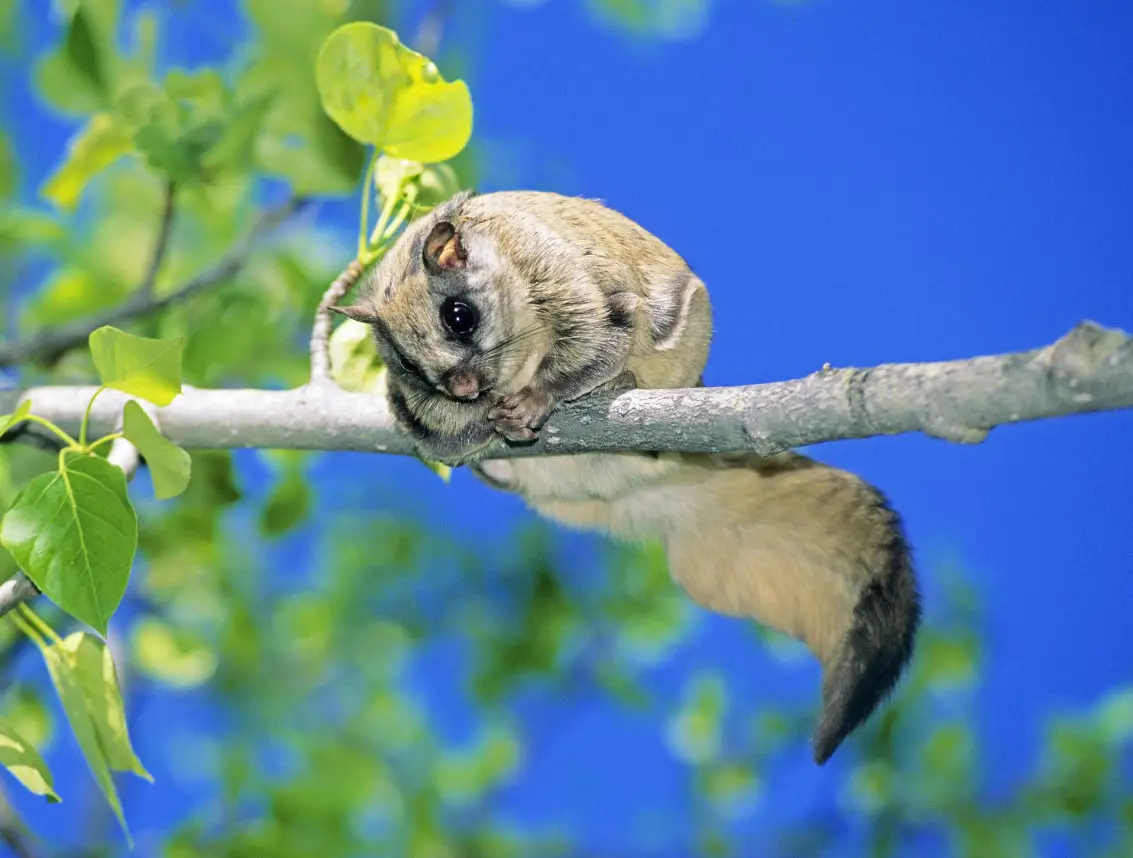
Minnesota is home primarily to the Northern Flying Squirrel (Glaucomys sabrinus), though the Southern Flying Squirrel (Glaucomys volans) is occasionally found in the southeastern parts of the state. The Northern species is slightly larger and can be distinguished by its longer, bushier tail and more prominent facial markings. Flying squirrels have soft, dense fur that ranges from gray-brown on the back to a creamy white or pale belly. Their large, dark eyes are adapted for nocturnal vision, allowing them to navigate the forest canopy at night with remarkable precision.
The most notable physical feature of flying squirrels is their patagium, a furry flap of skin that stretches from the wrist to the ankle. This structure enables them to glide through the air, often covering distances of 20 to 50 feet in a single leap. Their sharp claws and flexible limbs allow them to climb efficiently, even on vertical tree trunks. The combination of a flattened tail, which acts as a rudder, and the gliding membrane makes them highly maneuverable in their forested environment.
Size and Lifespan
Northern Flying Squirrels in Minnesota typically measure 10 to 13 inches from nose to tail, with the tail itself accounting for roughly half of their total length. They weigh between 3.5 and 5.5 ounces, making them relatively small compared to other tree squirrels. Their lightweight body structure is ideal for gliding and reduces the risk of injury when landing from heights. Southern Flying Squirrels are slightly smaller, averaging 8 to 10 inches in length and weighing around 2 to 3 ounces.
Flying squirrels have a lifespan that generally ranges from 3 to 5 years in the wild, though some individuals have been known to survive up to 7 years under favorable conditions. Their nocturnal habits, coupled with their ability to glide and evade predators, contribute to their survival in Minnesota’s forests.
Behavior and Nocturnal Lifestyle
Flying squirrels are predominantly nocturnal, emerging from their nests shortly after dusk and returning before dawn. This nocturnal behavior helps them avoid many predators, including hawks, owls, and foxes. Their movements are silent and deliberate, allowing them to navigate the dense canopy without drawing attention. Despite their small size, flying squirrels are social creatures, often nesting communally during the colder months to conserve warmth.
Communication among flying squirrels involves a combination of vocalizations, scent markings, and tail movements. They emit a variety of sounds, including chirps, squeaks, and hissing noises, which can indicate alarm, mating intentions, or social interaction. Scent glands located near their anus and on the belly play a crucial role in territorial marking and recognizing family members.
Feeding Habits and Diet
Flying squirrels are omnivores with a diet that varies seasonally. In Minnesota, they feed on a combination of nuts, seeds, fruits, fungi, and tree sap. Acorns, hickory nuts, and beechnuts are staples during the fall when squirrels are actively preparing for winter. Mushrooms, particularly truffles, are highly prized and play a significant role in forest ecology by helping disperse fungal spores.
In addition to plant-based foods, flying squirrels occasionally consume insects, bird eggs, and small invertebrates. Their keen sense of smell helps locate hidden food sources, and their dexterous paws allow them to handle and manipulate objects with precision. By foraging at night, flying squirrels reduce competition with diurnal species such as gray squirrels and chipmunks, enabling them to occupy a unique ecological niche.
Habitat and Distribution in Minnesota
Flying squirrels thrive in mature forests that offer a mix of coniferous and hardwood trees. In Minnesota, the Northern Flying Squirrel is most commonly found in the northeastern forests, where spruce, fir, and pine trees dominate the landscape. These environments provide abundant food sources, nesting sites, and protection from predators. The Southern Flying Squirrel, though less common, is typically found in deciduous forests of the southeastern region, favoring oak and hickory trees.
Flying squirrels build nests in tree cavities, abandoned woodpecker holes, or leaf nests known as dreys. During winter, they may share nests with multiple individuals to conserve heat. Tree hollows provide safe refuges from predators, harsh weather, and human disturbances, making mature forests essential for their survival.
Gliding Ability and Hunting Techniques
While flying squirrels are not hunters in the traditional sense, their gliding ability is an extraordinary adaptation for foraging and predator avoidance. By leaping from a high branch and extending their patagium, they can glide efficiently to reach food sources without descending to the forest floor. This skill reduces energy expenditure and limits exposure to ground-dwelling predators.
Flying squirrels are agile and precise in the air, capable of altering direction mid-glide and landing with accuracy. Their bushy tails act as stabilizers and rudders, helping them steer and brake during flight. This gliding ability also allows them to move quickly between trees, facilitating social interactions, mating, and the defense of territories.
Differences from Other Squirrel Species
Minnesota is home to several squirrel species, including gray squirrels, red squirrels, and fox squirrels. Flying squirrels are distinct in their nocturnal habits and gliding abilities. Unlike tree squirrels that primarily climb and jump, flying squirrels rely on their patagium for locomotion. Their diet also differs, with a higher dependence on fungi and specific nuts that may not be as accessible to other species.
Behaviorally, flying squirrels are more social and less territorial than many diurnal squirrels. They are less aggressive when encountering others and often share nesting spaces, particularly during the winter. Their nocturnal activity reduces direct competition for food and nesting sites with daylight-active squirrels, giving them a unique ecological role.
Fun Facts About Flying Squirrels
Flying squirrels are fascinating for a variety of reasons. One of the most surprising facts is their silent gliding ability. Unlike birds or bats, flying squirrels do not make noise while gliding, making their movements nearly invisible at night. Another intriguing feature is their ability to produce ultrasonic sounds, which humans cannot hear. These sounds are believed to facilitate communication and predator avoidance.
Flying squirrels also exhibit remarkable memory and spatial awareness. They can remember the locations of food caches and navigate complex forest canopies with ease. Some studies suggest that these squirrels are capable of limited problem-solving, demonstrating intelligence uncommon for rodents of their size. Additionally, despite their name, the “flying” term often confuses people, as they are technically gliders rather than true flyers.
Conservation and Human Interaction
While flying squirrels are not considered endangered in Minnesota, their dependence on mature forests makes them vulnerable to habitat loss. Logging, urban development, and forest fragmentation can reduce available nesting sites and food sources. Conservation efforts focus on preserving mature forest ecosystems and maintaining connectivity between habitat patches to support gliding routes and population stability.
Humans occasionally encounter flying squirrels in attics or homes, attracted by warmth and shelter. While they are not aggressive, they can cause minor damage if nesting indoors. Humane methods, such as sealing entry points and providing alternative nesting boxes, are recommended to prevent conflict. Educating the public about these creatures encourages coexistence and appreciation for their ecological role.
Role in the Ecosystem
Flying squirrels play an essential role in Minnesota’s forest ecosystems. By feeding on fungi and nuts, they help disperse seeds and spores, contributing to forest regeneration and biodiversity. Their nocturnal activity ensures that certain ecological niches are utilized efficiently, complementing the roles of diurnal animals. Predators, including owls, martens, and foxes, rely on flying squirrels as a food source, linking them to the broader food web.
Their presence also indicates the health of forest ecosystems. A stable flying squirrel population suggests a well-structured forest with adequate tree diversity and mature canopy layers. Conservationists often use flying squirrels as a bioindicator species to assess the impact of environmental changes on forest habitats.
Observing Flying Squirrels in the Wild
Spotting flying squirrels in Minnesota requires patience and a nocturnal perspective. Observers often use low-intensity red lights to avoid disturbing these sensitive animals. Listening for their soft chirps, rustling movements, and occasional glides between trees increases the likelihood of sightings. Providing natural food sources, such as nuts or seeds, can attract flying squirrels to observation areas, but it is essential to avoid overfeeding or habituating them to humans.
Nature enthusiasts and researchers alike marvel at their gliding prowess, social interactions, and adaptability. Documenting flying squirrels contributes to a better understanding of their behavior, ecology, and the conservation needs of Minnesota’s forests.
Final Thoughts
Flying squirrels in Minnesota are remarkable creatures that embody the intricate balance of nocturnal forest life. Their gliding ability, social behavior, and dietary habits distinguish them from other squirrels and highlight the adaptability of small mammals to forested environments. Protecting their habitats, understanding their ecological roles, and appreciating their unique characteristics ensures that future generations can continue to observe these elusive gliders in the wild. From their nocturnal flights to their important role in dispersing seeds and fungi, flying squirrels remain one of Minnesota’s most captivating and underappreciated wildlife species.
FAQs About Flying Squirrels in Minnesota
What species of flying squirrels are found in Minnesota?
Minnesota is home mainly to the Northern Flying Squirrel (Glaucomys sabrinus), which inhabits the northeastern forests. The Southern Flying Squirrel (Glaucomys volans) can occasionally be found in the southeastern regions. The two species differ in size, tail length, and habitat preference.
How can you identify a flying squirrel in the wild?
Flying squirrels have large dark eyes, soft gray-brown fur, and a creamy white belly. Their most distinctive feature is the patagium, a membrane that stretches from wrist to ankle, allowing them to glide between trees. Observing them at night is easier near tree cavities or food sources.
Do flying squirrels really fly?
No, flying squirrels do not fly like birds. They glide using the patagium, which acts like a parachute, enabling them to cover distances of 20 to 50 feet. Their bushy tails function as rudders, helping with steering and braking during glides.
What do flying squirrels eat in Minnesota?
Flying squirrels are omnivores. Their diet includes nuts, seeds, fruits, fungi (especially truffles), tree sap, and occasionally insects or bird eggs. Seasonal availability of food influences their foraging behavior, with nuts being essential in the fall for winter preparation.
Where do flying squirrels live in Minnesota?
They prefer mature forests with a mix of coniferous and hardwood trees. Northern Flying Squirrels are common in northeastern forests dominated by spruce, fir, and pine, while Southern Flying Squirrels are found in southeastern oak and hickory forests. They nest in tree cavities, abandoned woodpecker holes, or leaf nests called dreys.
Are flying squirrels social animals?
Yes, they are more social than many other squirrel species. Flying squirrels often share nests during winter to conserve heat and communicate using chirps, squeaks, and scent markings. Their social behavior helps them survive in cold Minnesota winters.
How are flying squirrels different from other squirrels?
Flying squirrels are nocturnal and have the unique ability to glide. They rely heavily on fungi in their diet and are generally less territorial and more social than diurnal squirrels such as gray or red squirrels. These differences allow them to occupy a distinct ecological niche.
Can flying squirrels be seen in urban areas?
While primarily forest dwellers, flying squirrels can occasionally be found in suburban or rural areas near mature trees. They may enter attics or barns seeking shelter, but they are generally non-aggressive and avoid humans.
Are flying squirrels endangered in Minnesota?
Flying squirrels are not considered endangered. However, they depend on mature forests for survival, so habitat loss from logging and urban development can impact local populations. Conservation of forested areas is crucial for their continued presence in Minnesota.
What is a fun fact about flying squirrels?
Flying squirrels can produce ultrasonic sounds that humans cannot hear. These sounds are used for communication and may help avoid predators. Additionally, their gliding ability is almost silent, making them difficult to detect at night.

